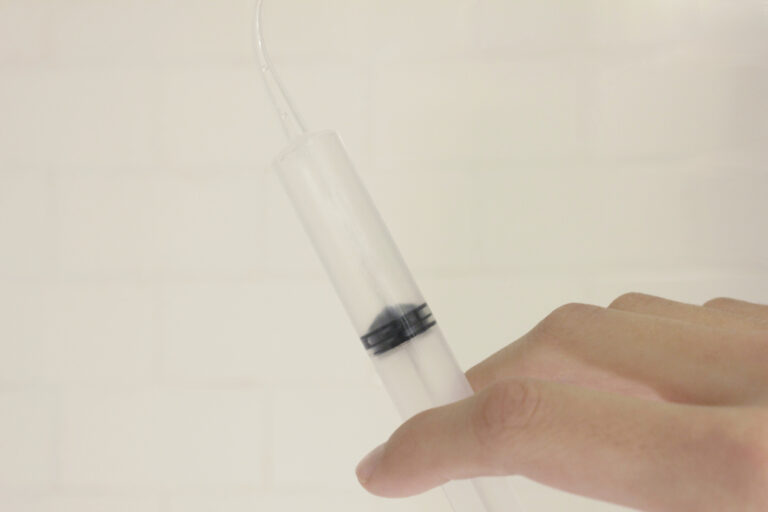A lump or swelling under the jaw can be caused by a variety of conditions, including tooth infections. An infected tooth may lead to the formation of an abscess, which can cause a visible lump under the jaw as pus accumulates. Understanding the connection between tooth infections and jaw lumps can help determine when to see a dentist.
What causes lumps under the jaw?

There are several potential causes of lumps or swellings under the jaw:
Dental infections
- Tooth abscess: An abscess is a pocket of pus caused by a bacterial infection. Abscesses commonly form at the root of infected teeth. The pus builds up in the tissues around the tooth, causing swelling and pain.
- Periodontal abscess: This type of dental abscess occurs in the gums and causes gum swelling around one or more teeth.
- Pericoronitis: This infection occurs in the gum tissue around a partially erupted wisdom tooth. It causes swelling and pain in the soft tissues around the tooth.
Lymph node swelling
The lymph nodes under the jaw can swell due to:
- An infection in the mouth, throat, or face
- A localized skin infection like acne
- A viral or bacterial illness
- An immune system disorder
- Certain cancers
Salivary gland issues
Swelling under the jaw can also arise from salivary gland problems like infections, cysts or salivary stones.
Other causes
Less common causes of jaw lumps include:
- Tumors in the mouth or jaw
- Thyroid disorders
- Swelling of the submandibular duct
Can a tooth infection spread to the jaw?
Yes, an untreated tooth infection can eventually spread from the tooth roots into the jawbone. Here is how this can occur:
- Pulp infection: The pulp is the soft inner tissue of the tooth containing nerves and blood vessels. It can become infected due to tooth decay or trauma.
- Abscess formation: Bacteria from the infected pulp can spread through the root canal to the bone surrounding the tooth roots. Pus accumulates in these tissues, forming an abscess.
- Cellulitis: As the abscess grows, the infection can spread into the jawbone itself. This is called cellulitis or osteomyelitis. It causes bone damage and further swelling.
- Systemic infection: In rare cases, the bacteria may enter the bloodstream from the abscess and spread infection throughout the body.
Thus an untreated tooth infection doesn’t always stay localized to the tooth. Jaw swelling and lumps under the chin can signify the infection has extended deeper into jaw tissues.
Signs a tooth infection has spread to the jaw

Here are some signs that a tooth infection has advanced into the jawbone:
- Swelling in the jaw, under the chin or along the neck
- Severe, throbbing pain in the jaw that is continuous
- Pus discharge from the gums around the infected tooth
- Loosening of the infected tooth
- Fever, chills and feeling generally unwell
- Swollen lymph nodes under the jaw or in the neck
- Redness, warmth and tenderness in the jaw and face
- Bad breath or foul taste in the mouth
- Difficulty opening the mouth or chewing
- Numbness, pain or swelling on one side of the face or mouth
If infection has spread into the jawbone, you may be able to see or feel a hard, swollen lump on the jaw near the problematic tooth. See a dentist immediately if jaw infection is suspected.
Dental causes of lumps under the jaw
Lumps or swellings under the jaw resulting from tooth infections may arise from the following dental causes:
Tooth abscess
A tooth abscess forms when a bacterial infection destroys tooth pulp and spreads into the root and surrounding bone. The abscess contains a pocket of pus under pressure which leads to the swelling. Abscesses most often occur in molars but can develop in any tooth. The resulting lump is located beside the infected tooth.
Periodontal abscess
These abscesses begin as infections in the gums around the tooth. They form pockets of pus within gum tissues which can lead to swelling and lumps. Periodontal abscesses typically affect the gums around front teeth.
Pericoronitis
This condition causes soft tissue around a partially erupted wisdom tooth to become infected and swollen. It forms painful, puffy lumps where the gum overlaps the incoming wisdom tooth.
Cellulitis
This diffuse inflammation and infection of the jawbone can arise from untreated tooth infections. It causes swelling, redness, warmth and bone pain in the affected area. The resulting lump may encompass a larger area of the jaw.
Developmental jaw cysts
Cysts can develop in the jaws from remnants of your tooth development process. The cysts eventually expand, destroying surrounding bone and causing fluid-filled lumps. They often occur under molars.
When to see a dentist

You should make an appointment to see your dentist as soon as possible if you notice any swelling or lumps developing in your jaw, especially if you have an infected tooth. Seek emergency dental care if you have:
- Severe, constant, throbbing jaw pain
- Pus leaking from your gums
- Difficulty swallowing or opening your mouth
- Fever higher than 100°F (37.8°C)
- Lump that is quickly increasing in size
- Numbness or paralysis on any part of your face
The dentist will examine your teeth, jaw and gums. They may order dental X-rays or a CT scan to check for bone damage. Treatment involves draining abscesses and prescribing antibiotics. You may need a root canal, tooth extraction, or further dental surgery if the infection is severe. Prompt treatment helps prevent complications like sepsis or osteomyelitis.
Diagnosing jaw infections
To determine if a lump under your jaw is caused by a tooth infection, the dentist will use:
- Medical history – Your symptoms and dental history provide clues to the cause. Let your dentist know if you have tooth pain or dental problems like cavities or cracked teeth.
- Oral exam – The dentist will check your teeth and gums for decay, tenderness, swelling, redness and pus discharge. They will also feel along your jaw and neck for lumps or enlarged lymph nodes.
- Dental X-rays – X-rays allow dentists to visualize the tooth roots and surrounding bone. Signs of infection like bone loss and abscess formation will show up.
- CT scan – If infection is severe or widespread, a CT scan may be ordered. This provides 3D images of bone to reveal the extent of infection.
- Lab tests – You may have blood tests to check for elevated white blood cells if the infection has spread systemically. Pus samples from abscesses can also be tested for bacteria.
Identifying the oral source of infection is key. Once diagnosed, the dentist will provide suitable antibiotic treatment and dental procedures to resolve the infection.
Treating jaw infections from tooth problems
Once diagnosed, treatment will focus on draining pus from abscesses and eliminating the underlying infection. Options may include:
- Root canal treatment – This is done for infections stemming from tooth pulp decay. The infected pulp is removed and replaced with a filling.
- Tooth extraction – If the tooth cannot be saved, your dentist will extract it surgically to fully remove the infection.
- Incision and drainage – Lumps caused by gum or jaw abscesses may be cut open to release the pus.
- Antibiotics – These will be prescribed to clear the infection. Severe infections require stronger intravenous antibiotics.
- Dental surgery – Some infections require surgical debridement and bone grafting procedures to remove infected jaw tissue.
- Hospitalization – For severe infections accompanied by high fever or facial swelling, you may need hospitalization for pain management and intravenous antibiotics.
Good oral hygiene and prompt treatment of cavities can help prevent tooth infections from occurring in the first place. See your dentist twice a year for checkups and cleanings.
Complications from jaw infections
Left untreated, tooth infections can spread and cause serious medical complications:
- Cavernous sinus thrombosis – Infection may reach the cavernous sinuses located at the base of the brain. This rare complication can be fatal.
- Ludwig’s angina – This severe infection under the jaw can cause airway obstruction and asphyxiation. Emergency surgery is required.
- Sepsis – Widespread systemic infection that can result in organ failure, shock and death.
- Osteomyelitis – Chronic bone infection that causes severe bone damage in the jaws.
- Brain abscess – A rare but life-threatening brain infection arising from dental bacteria spreading through veins.
The spread of infection can also permanently damage nerves in the face. This leads to numbness or paralysis in the lips, eyes, forehead and cheeks.
Seeking prompt dental treatment is vital at the first signs of a tooth infection to avoid these serious complications.
Can jaw and tooth infections return after treatment?

Yes, it’s possible for jaw infections originating from a tooth to return, even after a full course of antibiotic treatment. Here’s why:
- The first round of antibiotics may not have fully eliminated the bacteria. Some bacteria could have survived and multiplied again.
- An antibiotic-resistant strain of bacteria may be causing the infection. Standard antibiotics won’t work against it.
- Some fragments of infected tissue may remain after surgical drainage and debridement. This could lead to recurrence of infection.
- An undiagnosed root fragment left from an extraction can harbor infection.
- If the original source of infection, like a tooth cavity or cracked tooth, hasn’t been repaired, bacteria can spread again.
- Patients with weakened immune systems are more prone to recurring infections.
To prevent recurrence and reinfection:
- Take the full antibiotic course as prescribed.
- Follow up with your dentist to be sure the original dental issue has been resolved.
- Have a dentist monitor the area to ensure infection is fully cleared.
- Maintain excellent oral hygiene and dental health.
- See your dentist twice yearly for professional cleanings and checkups.
Prompt dental treatment and good oral hygiene are key to preventing ongoing jaw infections.
Frequently Asked Questions about Tooth Infections Causing Jaw Lumps
1. What does a tooth abscess lump feel like?
A tooth abscess lump feels like a round, fluid-filled swelling that is tender and firm to the touch. It is often located in the gum beside the infected tooth. The overlying skin also appears reddened and inflamed.
2. When should I see a doctor for a lump under jaw?
See your dentist urgently if you have a painful, pus-filled lump under your jaw along with fever and tooth pain or swelling. These are signs of a dental abscess that requires prompt antibiotic treatment and drainage.
3. Can a tooth infection cause swollen lymph nodes under jaw?
Yes, lymph nodes under the jaw often swell as they help fight off infection from an adjacent tooth. The swollen nodes feel like small, tender lumps under the jawbone. They indicate your immune system is responding to a localized infection.
4. Does jaw need to be treated with antibiotics when tooth is removed?
Not necessarily. For limited infections, extracting the tooth may eliminate the infection without needing antibiotics. But more severe, widespread infections do require antibiotic treatment even with tooth removal. Your dentist will advise you based on examination.
5. Can a tooth infection spread to the brain?
This is very rare, but tooth infections can potentially spread to the brain, causing a brain abscess or meningitis. Seek emergency care for symptoms like high fever, severe headaches, stiff neck and disorientation, which can indicate a spreading infection. Prompt dental treatment is vital.






